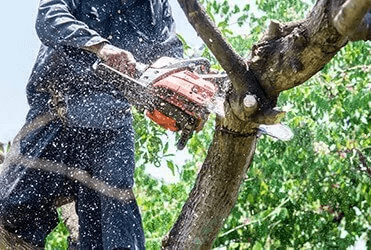Tree trimming is an essential part of maintaining healthy, beautiful trees and ensuring the safety of your property. But how often should you trim your trees? The answer depends on several factors, including the type of tree, its health, location, and the goals of the trimming. Let’s break it down.
General Guidelines for Tree Trimming
For most trees, trimming every 1-3 years is sufficient to maintain their health and shape. Young trees may require more frequent attention to establish strong structure, while mature trees typically need less frequent trimming.
Here are some general recommendations:
- Young Trees: Trim every 1-2 years to shape their structure and encourage healthy growth.
- Mature Trees: Trim every 3-5 years to remove dead or weak branches and maintain their shape.
- Fruit Trees: Trim annually during the dormant season to maximize fruit production.
- Hedges or Shrubs: These may need trimming several times a year, depending on the species and desired appearance.
Signs It’s Time to Trim Your Trees
Sometimes, your trees will let you know they need attention. Look out for these signs:
- Dead or Diseased Branches: These can pose a safety hazard and should be removed promptly.
- Overgrown or Tangled Branches: If branches are crossing or growing too densely, thinning them out improves airflow and sunlight exposure.
- Obstruction of Property: Branches encroaching on your home, power lines, or walkways should be trimmed immediately.
- Damage from Storms: Fallen or broken branches after a storm require immediate attention to prevent further damage.
Seasonal Considerations for Tree Trimming
The time of year can also influence how often and when you trim your trees:
- Winter (Dormant Season): The best time for most tree trimming. Trimming during dormancy promotes vigorous growth in the spring and reduces the risk of disease.
- Spring/Summer: Light trimming can be done to shape trees or remove minor issues. Avoid heavy pruning, as this can stress the tree.
- Fall: It’s generally better to avoid trimming in the fall, as trees are preparing for dormancy and may not heal as quickly.
Special Situations Requiring Immediate Trimming
- Storm Damage: Remove broken or hanging branches to prevent safety risks.
- Pest or Disease Infestation: Trimming can help stop the spread of infestations or diseases.
- Hazardous Branches: Trim branches that pose a risk to structures, power lines, or people.
Why Regular Tree Trimming Matters
Regular tree trimming offers many benefits:
- Promotes Health: Removes diseased, dead, or weak branches, reducing the risk of decay.
- Enhances Safety: Prevents falling branches and reduces the likelihood of property damage.
- Boosts Aesthetics: Maintains the tree’s shape and enhances the overall appearance of your landscape.
- Encourages Growth: Proper trimming directs energy to healthy growth and improves fruit or flower production.
Leave It to the Professionals
While minor pruning can be a DIY task, major tree trimming is best left to professionals. Certified arborists have the expertise and equipment to handle tree trimming safely and effectively, especially for large or hazardous trees.
At Brents Tree Service, we’re here to help you keep your trees healthy, safe, and beautiful. Whether you need regular maintenance or an emergency trim, our team has you covered.
Contact Us Today
Ready to give your trees the care they deserve? Contact us for professional tree trimming services. Call us at 737-257-6286 to schedule your appointment. Let’s keep your trees in top shape all year long!

